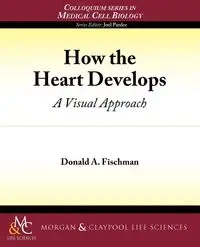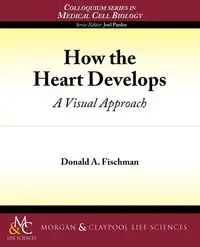How the Heart Develops - Donald Fischman
How the Heart Develops - Donald Fischman
- A Visual Approach
EAN: 9781615040001
Marka
Symbol
344FEZ03527KS
Autorzy
Donald Fischman
Rok wydania
2009
Elementy
80
Oprawa
Miekka
Format
19.1x23.5cm
Język
angielski

Bez ryzyka
14 dni na łatwy zwrot

Szeroki asortyment
ponad milion pozycji

Niskie ceny i rabaty
nawet do 50% każdego dnia
Niepotwierdzona zakupem
Ocena: /5
Marka
Symbol
344FEZ03527KS
Kod producenta
9781615040001
Autorzy
Donald Fischman
Rok wydania
2009
Elementy
80
Oprawa
Miekka
Format
19.1x23.5cm
Język
angielski

With possible exception of the atomic clock, the heart may be the most perfect machine ever devised. How it develops from a simple embryonic tube is a fascinating story of biology and lends a great deal of insight into the source of heart defects that affect children and adults alike.
Central to this entire lecture is the fact that the fetus resides in an aquatic environment. Oxygenated blood arrives from the placenta and deoxygenated returns to the placenta. The lungs play no role in delivering oxygen or removing carbon dioxide to or from the circulation. Thus, the fetus mainly (but not exclusively) requires a three-chambered heart rather than the fourchambered heart that we are all familiar with. This resembles fish circulation in which blood leaves the heart into an aortic sac from which emanate the aortic arches that deliver blood to the gills, where it is oxygenated and CO2 is removed. Blood then goes to the dorsal aortae for nourishing the body tissues. In a fish there is no need for a four-chambered heart, since fish do not use lungs to aerate the blood or remove CO2. Although the fetus lacks gills and still develops a four-chambered heart, much of fetal circulatory physiology depends on a "quasi-three-chambered circulation" that bypasses the pulmonary circulation. Upon birth, this "aquatic" circulation must change within minutes to permit lung function. The topics to follow trace how this circulation develops and how it changes upon birth.
Table of Contents: Fetal and Embryonic Hematopoiesis / Formation of the Precardiac Mesoderm and Fate Mapping During Gastrulation / Tubular Heart / Cardiac Looping / Pericardial Cavity / Endocardial Cushions / Atrial Septation / Ventricular Septation / Partitioning of the Bulbus Cordis and Truncus Arteriosus / Conducting System / Cell Lineages During Heart Development / Circulation at Term and Changes upon Birth / Recommended Readings
EAN: 9781615040001
EAN: 9781615040001
Niepotwierdzona zakupem
Ocena: /5
Zapytaj o produkt
Niepotwierdzona zakupem
Ocena: /5
Napisz swoją opinię

